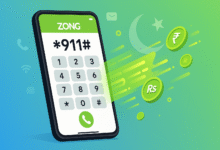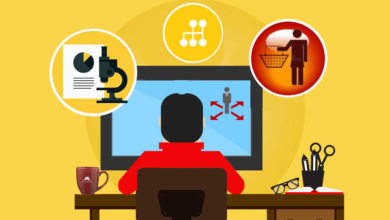How to Protect Your Social Media Accounts from Hacking in 2025
This guide walks you through the latest cybersecurity tips and best practices to help you stay one step ahead of hackers and keep your digital presence secure.

In an increasingly digital world, your social media accounts are more than just platforms for connection—they’re extensions of your identity, personal brand, and professional presence. As we enter 2025, cybercriminals have become more sophisticated, making it essential to know how to protect your social media accounts from hacking. From phishing scams to advanced malware, the threats are real and rapidly evolving.
This guide walks you through the latest cybersecurity tips and best practices to help you stay one step ahead of hackers and keep your digital presence secure.
Understanding the Evolving Cybersecurity Threat Landscape
The Rise of Social Media Hacking in 2025
Social media platforms continue to dominate online activity, with billions of users sharing their lives across Facebook, Instagram, TikTok, X (formerly Twitter), and LinkedIn. But this digital footprint also attracts hackers. According to a 2025 report from Cybersecurity Ventures, social media breaches have surged by 35% compared to the previous year, with attackers targeting accounts for financial gain, identity theft, and social engineering schemes.
Common Tactics Hackers Use
To effectively guard against these threats, it’s important to recognize the methods hackers rely on:
-
Phishing Scams: Fake login pages or messages trick users into revealing passwords.
-
Credential Stuffing: Using leaked credentials from other platforms to access your accounts.
-
SIM Swapping: Hijacking your phone number to bypass two-factor authentication (2FA).
-
Malicious Third-Party Apps: Gaining access to your data through shady integrations.
Being aware of these tactics is the first step toward prevention.
Top Security Practices to Safeguard Your Accounts
Use Strong, Unique Passwords
Weak or reused passwords remain one of the biggest security flaws. Here’s how to strengthen yours:
-
Use at least 12 characters, including uppercase, lowercase, numbers, and symbols.
-
Avoid personal information like birthdates or names.
-
Don’t use the same password across multiple platforms.
Pro Tip: Use a trusted password manager like Bitwarden, 1Password, or Dashlane to generate and securely store your passwords.
Enable Two-Factor Authentication (2FA)
Two-factor authentication is one of the most effective ways to protect your accounts. Even if someone gets your password, they won’t be able to log in without a second form of verification.
Types of 2FA include:
-
SMS-based codes (less secure but better than none).
-
Authentication apps like Google Authenticator, Authy, or Microsoft Authenticator.
-
Hardware security keys (e.g., YubiKey) for maximum protection.
Set up 2FA in the security settings of your social media platforms today.
Regularly Monitor Account Activity
Frequently checking your login activity can help you catch unauthorized access before it causes damage.
-
Go to your account’s “Security” or “Login Activity” section.
-
Look for logins from unknown devices or locations.
-
Sign out from suspicious sessions immediately.
Most platforms also allow you to receive alerts for unrecognized login attempts—turn those on.
Advanced Protection Strategies in 2025
Use of Biometric Authentication
Biometrics like facial recognition and fingerprints are becoming standard on modern smartphones. These features offer a higher level of security because they are difficult to replicate.
-
Use biometric locks on your phone to protect social media apps.
-
Combine biometrics with strong passwords for layered protection.
Device & Location-Based Access Controls
Many platforms now offer device and location recognition as part of their security protocols.
-
Only allow logins from trusted devices.
-
Restrict access by geographic location where possible.
-
Set automatic logouts after periods of inactivity.
These measures reduce the chances of someone gaining unauthorized access remotely.
App Permissions & Third-Party Access Management
Third-party apps connected to your social accounts can be entry points for hackers.
-
Go to your account settings and review connected apps.
-
Revoke access to any app you don’t recognize or no longer use.
-
Only authorize tools from verified developers.
Cleaning up app access helps prevent data leaks and keeps your account under your control.
Read More: How to Secure Your Online Privacy in Pakistan: A Step-by-Step Guide
Best Practices for Safe Social Media Behavior
Avoid Clicking on Suspicious Links
Scam links are often disguised as promotions, giveaways, or fake news. Clicking them could lead to malware installation or phishing pages.
-
Don’t click links from strangers, especially in DMs or comments.
-
Use link scanners like VirusTotal before opening unfamiliar URLs.
-
Be skeptical of offers that seem too good to be true—they usually are.
Limit Personal Information Sharing
The more you share, the easier it is for hackers to guess your security questions or impersonate you.
-
Avoid posting your full birthdate, address, or phone number.
-
Tighten your privacy settings so only trusted people can view sensitive content.
-
Be mindful of what you reveal in photos (e.g., work badges, documents, home details).
Be Wary of Public Wi-Fi
Public networks can be exploited by hackers using tools like packet sniffers to steal login information.
-
Avoid logging into social media accounts on open Wi-Fi.
-
If you must, use a VPN (virtual private network) to encrypt your data.
VPNs protect your traffic and make it harder for hackers to intercept your information.
What to Do If Your Account Is Hacked
Immediate Actions to Take
If you suspect your account has been compromised, act fast:
-
Change your password immediately.
-
Log out from all sessions and revoke app permissions.
-
Notify your contacts to be cautious of messages from your profile.
Speed is key—the longer hackers have control, the more damage they can do.
Contacting Platform Support
Every social media platform has protocols for recovering hacked accounts:
-
Facebook: facebook.com/hacked
-
Instagram: Use the “Need More Help?” option during login issues.
-
X (Twitter): help.twitter.com/forms/hacked
-
LinkedIn: Visit the Help Center and report unauthorized access.
Provide identity verification if requested and follow instructions carefully.
Reporting to Authorities or Cybercrime Units
If your account was used for illegal activities or your identity was stolen:
-
File a report with your country’s cybercrime division.
-
In the U.S., report to the FBI’s Internet Crime Complaint Center (IC3).
-
Document everything—screenshots, emails, and timestamps.
This step is crucial for accountability and legal support.
Tools and Resources for Enhanced Social Media Security
Recommended Password Managers
-
1Password—simple UI and powerful encryption.
-
Bitwarden—open-source and budget-friendly.
-
LastPass—Cross-platform sync with security alerts.
Trusted Authenticator Apps
-
Google Authenticator—lightweight and widely accepted.
-
Authy—Cloud backup and multi-device support.
-
Microsoft Authenticator—Useful for integration with Windows accounts.
Cybersecurity Awareness Training
-
Coursera & edX—Offer courses on digital safety.
-
Cybrary—Free access to cybersecurity training for all levels.
-
YouTube channels—like “The Cyber Mentor” for practical tips.
The more you educate yourself, the safer you’ll be online.
Conclusion
In 2025, cybersecurity is not optional—it’s essential. Social media platforms are powerful tools for connection, but they come with risks that require vigilance, awareness, and proactive protection. By implementing the strategies in this guide—strong passwords, two-factor authentication, privacy-conscious behavior, and regular security checks—you can significantly reduce your chances of falling victim to hackers.
Don’t wait until it’s too late.











